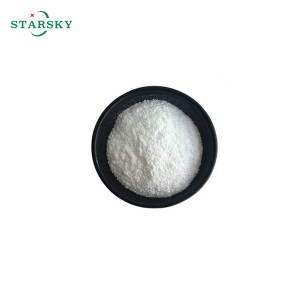Bismuth oxide CAS 1304-76-3
Bismuth oxide (Bi₂O₃) has several important applications, including:
1. Ceramics: Bismuth oxide CAS 1304-76-3 used in the production of ceramics, especially in the manufacture of high-temperature superconductors, and as a component of various ceramic glazes.
2. Pigment: Bismuth oxide can be used as a yellow pigment in paints, plastics and coatings because of its bright color and good stability.
3. Catalyst: It acts as a catalyst in various chemical reactions, including reactions that produce certain organic compounds.
4. Drugs: Bismuth oxide is used in some drug formulations, especially for the treatment of gastrointestinal problems such as peptic ulcers.
5. Electronics: Bismuth oxide CAS 1304-76-3 is used in the production of certain electronic components, including semiconductors and as a dielectric material.
6. Glass and Glass Ceramics: Bismuth oxide is used to improve the properties of glass and glass ceramics, enhancing their thermal and optical properties.
Packed in 25 kg per drum or based on customers' requirements.

Bismuth Oxide (Bi₂O₃) should be stored properly to maintain its quality and prevent any potential hazards. Here are some guidelines for storing Bismuth Oxide:
1. Container: Store bismuth oxide in a sealed container to protect it from moisture and contamination. The container should be made of a material that is compatible with the chemical.
2. Environment: Keep the storage area cool, dry and well-ventilated. Avoid exposure to direct sunlight and extreme temperatures as these can affect the stability of the compound.
3. Label: Clearly label containers with the chemical name, concentration, and any relevant hazard information.
4. Separation: Keep bismuth oxide away from incompatible substances (such as strong acids or bases) to prevent any potential reactions.
5. Safety Precautions: Follow any specific safety guidelines provided by the manufacturer or supplier, including the use of personal protective equipment (PPE) when handling materials.
When transporting Bismuth Oxide (Bi₂O₃), it is important to follow specific precautions to ensure safety and compliance with regulations. Here are some considerations:
1. Regulatory Compliance: Check and follow local, national and international regulations regarding the transportation of chemicals. Bismuth oxide is generally considered non-hazardous, but any specific regulations that may apply must be verified.
2. Packaging: Use appropriate packaging materials that are compatible with bismuth oxide. Make sure the container is sturdy and can withstand handling during shipping. If necessary, use liners or bags to prevent spills.
3. Label: Clearly label the packaging with the correct chemical name, hazard information and any relevant handling instructions. If necessary, please mark with appropriate hazard symbols.
4. Documentation: Prepare and include all necessary shipping documents such as Safety Data Sheet (SDS), Shipping Declaration, and any other required documents.
5. Temperature Control: If applicable, ensure shipping conditions maintain a stable temperature to prevent any degradation of the material.
6. Avoid contamination: Ensure that bismuth oxide is free of contaminants before shipping. Contaminated materials may pose a risk during transportation.
7. Handling Precautions: Train personnel involved in the transport process on proper handling techniques and emergency procedures in case of spills or accidents.
8. Emergency Response: Have a plan in place to respond to any incidents that may occur during transportation, including spills or exposures.










